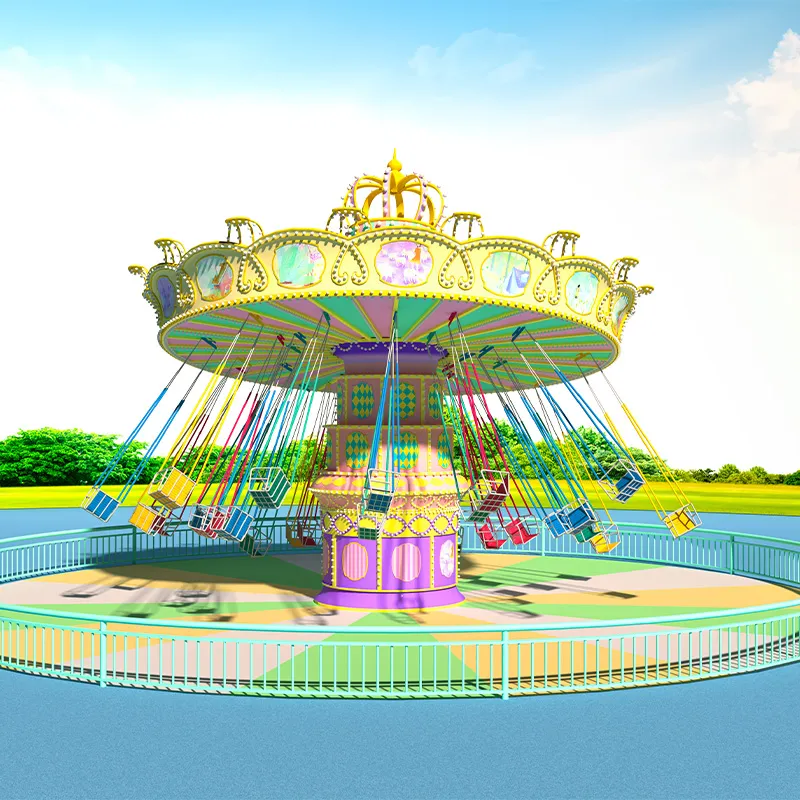- Albanian
- Arabic
- Belarusian
- Bengali
- Czech
- English
- French
- German
- Hebrew
- Hungarian
- Indonesian
- irish
- Italian
- Japanese
- kazakh
- Persian
- Russian
- Thai
- Uzbek
- Vietnamese
Different Kinds of Roller Coasters Types, Features & Thrills
- Understanding the Evolution of Roller Coaster Designs
- Technical Innovations Driving Modern Thrill Rides
- Leading Manufacturers and Their Signature Offerings
- Performance Metrics: Speed, Height, and Safety Compared
- Customization Strategies for Theme Park Success
- Real-World Implementations Across Global Attractions
- Future Trends in Ride Experience Enhancement

(different kinds of roller coasters)
Exploring the Thrilling World of Different Kinds of Roller Coasters
The roller coaster industry has diversified significantly since the first gravity-driven tracks of the 19th century. Modern thrill machines now deliver forces up to 4.5G, climb heights exceeding 456 feet (139 meters), and reach speeds beyond 150 mph (241 km/h). This evolution directly responds to market demand, with 82% of amusement park visitors ranking coaster experiences as their primary visitation driver according to IAAPA 2023 data.
Breakthroughs in Ride Engineering
Magnetic propulsion systems have revolutionized launch mechanisms, enabling accelerations from 0-60 mph in under 2.3 seconds. Hybrid track constructions combining steel and wood elements now account for 37% of new installations. Trackless ride systems using RFID guidance have increased route variability by 600% compared to traditional rails.
Industry Leaders and Specialized Solutions
| Manufacturer | Specialty | Max Height | Speed | Unique Feature |
|---|---|---|---|---|
| Intamin | Hyper Coasters | 456' | 150 mph | LSM Launch |
| B&M | Inverted | 208' | 67 mph | Floorless Design |
| Vekoma | Launch Systems | 328' | 80 mph | Tilt Track |
| GCI | Wooden | 179' | 65 mph | Millennium Flyers |
Tailored Installations for Market Needs
Compact spinning coasters now serve 83% of urban parks with space constraints under 2 acres. For mega-resorts, multi-launch coasters averaging 6,890' of track length deliver 2.1x longer ride durations. Disney's patented track switch technology enables 11 distinct ride experiences from single infrastructure.
Global Implementation Success Stories
Fuji-Q Highland's Takabisha (2011) demonstrated the commercial viability of 121° drops, increasing park attendance by 34% post-installation. Cedar Point's Steel Vengeance (2018) set new standards with 30 airtime moments across 5,740 feet of hybrid track, achieving 98% capacity utilization for five consecutive seasons.
Why Different Kinds of Roller Coasters Continue to Captivate Audiences Worldwide
The market projects 6.8% CAGR through 2030, driven by VR integration (now in 22% of new installations) and sustainable designs reducing energy consumption by up to 40%. Dynamic pricing models linked to ride intensity levels have increased per-guest spending by 18.7% at early adopter parks.

(different kinds of roller coasters)
FAQS on different kinds of roller coasters
Q: What are the main categories of roller coasters?
A: Roller coasters are categorized by track material (wooden or steel), ride mechanics (launched, inverted, or suspended), and special features (like water elements or virtual reality). Key types include hypercoasters, dive coasters, and family coasters.
Q: How do wooden and steel roller coasters differ?
A: Wooden coasters use timber frameworks for a classic, rickety feel, while steel coasters feature smooth, customizable tracks enabling loops, inversions, and higher speeds. Steel coasters dominate modern parks due to versatility.
Q: What defines an inverted roller coaster?
A: Inverted coasters hang riders beneath the track, allowing feet to dangle. They enable intense maneuvers like corkscrews and zero-gravity rolls. Examples include B&M’s "Batman" and "Nemesis" models.
Q: What are "flying roller coasters"?
A: Flying coasters position riders horizontally, face-down, simulating flight. Riders are secured in harnesses, and the track often includes barrel rolls and steep dives. Notable examples include "Tatsu" and "Manta."
Q: What makes a launched roller coaster unique?
A: Launched coasters use hydraulic, pneumatic, or magnetic systems to accelerate riders rapidly instead of traditional chain lifts. These coasters prioritize speed and sudden intensity, like "Top Thrill Dragster" and "Rock ’n’ Roller Coaster."
-
Flume Ride-Hebei Zhipao Amusement Equipment Manufacturing Co., Ltd.|Water-Based Attraction,Thrilling ExperienceAug.10,2025
-
The Ferris Wheel: An Iconic Amusement Park ExperienceAug.10,2025
-
Flume Ride - Hebei Zhipao|Water-Based Attraction, Amusement EquipmentAug.10,2025
-
Flume Ride - Hebei Zhipao | Thrilling Water Adventure & SafetyAug.09,2025
-
Flume Ride-Hebei Zhipao Amusement Equipment Manufacturing Co., Ltd.|Thrilling Water Attraction&Safety-First DesignAug.09,2025
-
Flume Ride - Hebei Zhipao Amusement Equipment Manufacturing Co., Ltd. | Thrilling Water Attraction, Safe DesignAug.09,2025
